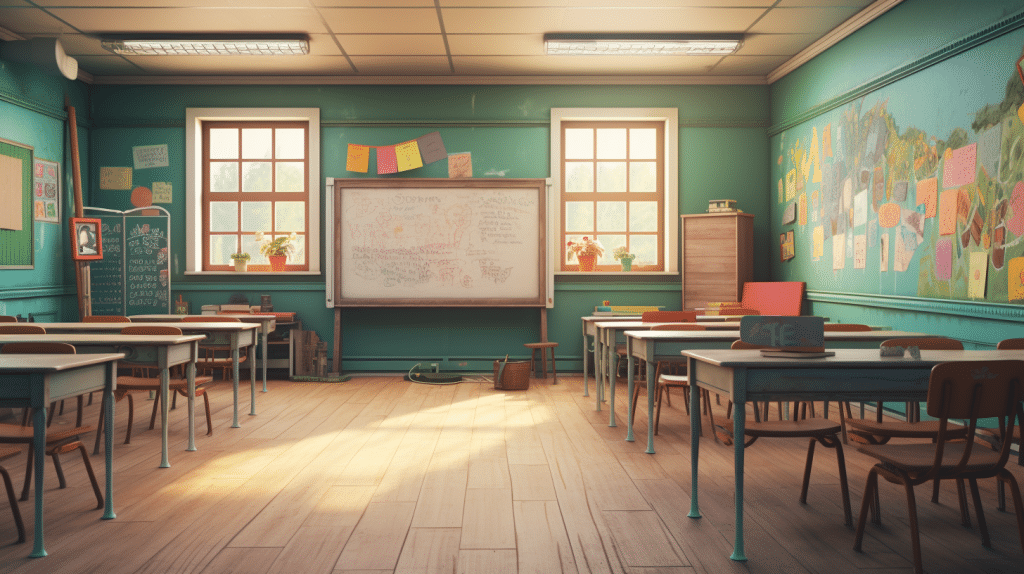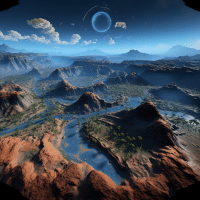Future-Ready Classrooms: Integrating VR in Elementary School

The future of education is here! With the introduction of virtual reality (VR) into elementary school classrooms, students are now able to explore and learn in ways that were never before possible. VR technology allows students to immerse themselves in a virtual world, where they can interact with 3D objects, explore new environments, and gain a deeper understanding of the material they are learning. By introducing VR into the classroom, teachers can create an engaging and interactive learning experience that will help students develop critical thinking skills and prepare them for the future.
VR in elementary school classrooms is a revolutionary way to teach students. It allows them to explore and interact with their environment in a way that is both fun and educational. With VR, students can take virtual field trips to places they would never be able to visit in person, such as the Great Wall of China or the Grand Canyon. They can also explore the solar system, learn about different cultures, and gain a better understanding of the world around them.
By introducing VR into the classroom, teachers can create an engaging and interactive learning experience that will help students develop critical thinking skills and prepare them for the future.
What is Virtual Reality (VR) and How Can It Be Used in Elementary Schools?
Virtual Reality (VR) is an exciting new technology that is revolutionizing the way we learn. It is a computer-generated simulation of a three-dimensional environment that can be interacted with in a seemingly real or physical way. VR has the potential to revolutionize the way we teach in elementary schools, allowing students to explore and interact with their environment in a way that was never before possible.
VR in elementary schools can be used to create immersive learning experiences that engage students in a way that traditional teaching methods cannot. By immersing students in a virtual world, they can explore and interact with their environment in a way that is both engaging and educational. For example, students can explore a virtual world to learn about different cultures, or they can take a virtual field trip to a museum or historical site.
VR can also be used to teach students about science, technology, engineering, and math (STEM) in a fun and interactive way.
Benefits of Integrating VR in Elementary School Classrooms
As technology continues to evolve, it is becoming increasingly important for elementary school classrooms to keep up with the times. Integrating virtual reality (VR) into the classroom is one way to ensure that students are prepared for the future. VR in elementary school classrooms can provide students with an immersive learning experience that can help them better understand complex concepts.

By using VR, students can explore different environments and gain a deeper understanding of the world around them. Additionally, VR can be used to create engaging and interactive lessons that can help students stay engaged and motivated. With VR, students can explore different cultures, visit historical sites, and even take virtual field trips to places they may never have the opportunity to visit in person. By introducing VR into the classroom, teachers can create an exciting and innovative learning environment that will help students develop the skills they need to succeed in the future.
Exploring Different Types of VR Technology for Elementary Schools
As technology continues to evolve, so too does the way we teach our children. Virtual reality (VR) is becoming increasingly popular in elementary schools, offering students a unique and immersive learning experience. With VR, students can explore different worlds, engage in interactive activities, and gain a deeper understanding of the material they are studying.
VR in elementary schools is a great way to engage students in the learning process. By immersing them in a virtual environment, students can explore different concepts and ideas in a way that is both fun and educational. For example, students can take virtual field trips to explore different cultures, or they can use VR to explore the solar system and learn about the planets. With VR, students can also engage in interactive activities, such as building a virtual city or creating a 3D model of a molecule. VR technology is also a great way to prepare students for the future.
By introducing them to the latest technology, students can gain a better understanding of how technology works and how it can be used to solve problems.
With VR, students can also develop their problem-solving skills and learn how to think critically. VR technology is revolutionizing the way we teach our children, and it is becoming increasingly popular in elementary schools. By introducing students to the latest technology, they can gain a deeper understanding of the material they are studying and develop their problem-solving skills. With VR, students can explore different worlds, engage in interactive activities, and prepare for the future.
Creating an Effective VR Learning Environment
As the world of technology continues to evolve, so too does the way we teach our children. Virtual reality (VR) is becoming an increasingly popular tool for elementary school classrooms, allowing students to explore and learn in a completely immersive environment.
With VR, students can experience a variety of educational activities, from virtual field trips to interactive simulations. By integrating VR into the classroom, teachers can create an engaging and effective learning environment that is both fun and educational. VR in elementary school classrooms can provide students with a unique and exciting way to explore the world around them. Through virtual field trips, students can visit places they may never have the opportunity to visit in person.
They can also explore interactive simulations that allow them to explore different concepts in a hands-on way. By using VR, teachers can create an engaging and immersive learning environment that encourages students to explore and learn in a fun and exciting way.
Your In-Depth Guide to Selecting a Quality VR Headset
Alternate Realities: A Deep Dive into the World of VR
Developing VR Curriculum for Elementary Schools
As technology continues to evolve, it is essential for elementary schools to keep up with the times and integrate virtual reality (VR) into their curriculum. VR provides an immersive learning experience that can help students better understand complex concepts and engage with the material in a more meaningful way.
By introducing VR into the classroom, students can explore new worlds, gain a deeper understanding of the material, and develop skills that will prepare them for the future. VR can be used to teach a variety of topics, from science and math to history and geography. For example, students can explore the solar system in a virtual environment, or take a virtual field trip to a historical site. By using VR, students can gain a better understanding of the material and develop critical thinking skills. Additionally, VR can be used to teach students about empathy and collaboration, as they work together to solve problems in a virtual world.
VR in elementary schools is an exciting and innovative way to engage students and prepare them for the future. With the help of VR, students can explore new worlds, gain a deeper understanding of the material, and develop skills that will help them succeed in the 21st century.

Tips for Implementing VR in Elementary Schools
As technology continues to evolve, it is becoming increasingly important for elementary schools to stay ahead of the curve and integrate virtual reality (VR) into their classrooms. VR can be a powerful tool for teaching, allowing students to explore and interact with their environment in ways that traditional methods cannot.
By introducing VR into the classroom, students can gain a deeper understanding of the material and develop a more meaningful connection to the subject matter. VR can be used to create immersive learning experiences that engage students in a variety of ways. For example, students can explore virtual worlds, take virtual field trips, and even participate in virtual experiments. By using VR, teachers can create engaging and interactive lessons that bring the material to life.
Additionally, VR can be used to help students develop problem-solving skills and critical thinking abilities. By introducing VR into the classroom, elementary schools can create a future-ready learning environment that prepares students for the challenges of the 21st century. With the right tools and resources, teachers can use VR to create engaging and interactive lessons that help students develop a deeper understanding of the material.
In conclusion, virtual reality (VR) is an exciting and innovative technology that can be used to enhance the learning experience in elementary school classrooms. It offers a variety of benefits, such as providing students with immersive learning experiences, allowing them to explore different types of technology, and creating an effective learning environment. Additionally, educators can develop VR curriculum to ensure that students are receiving the best possible education. Finally, there are several tips for implementing VR in elementary schools, such as providing adequate training and support for teachers and students.
By integrating VR into elementary school classrooms, educators can create a future-ready learning environment that will prepare students for success in the 21st century.


















